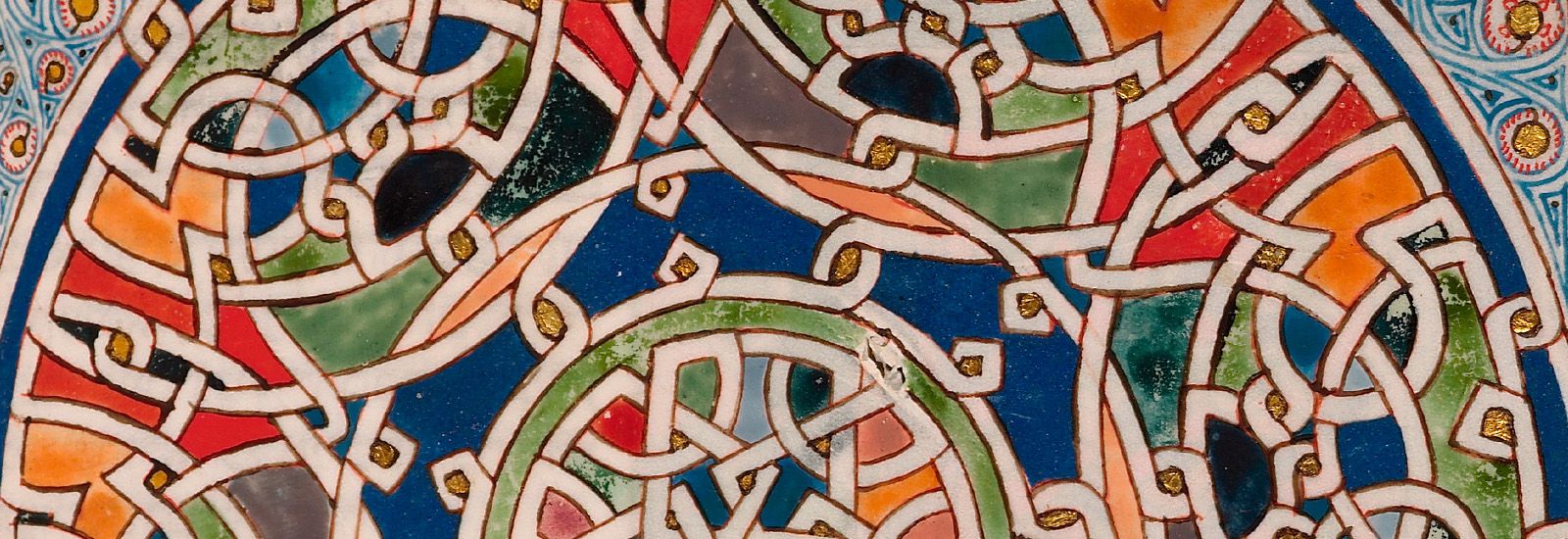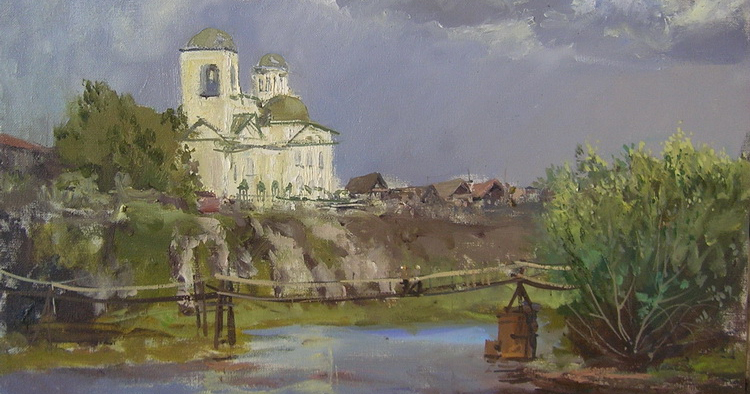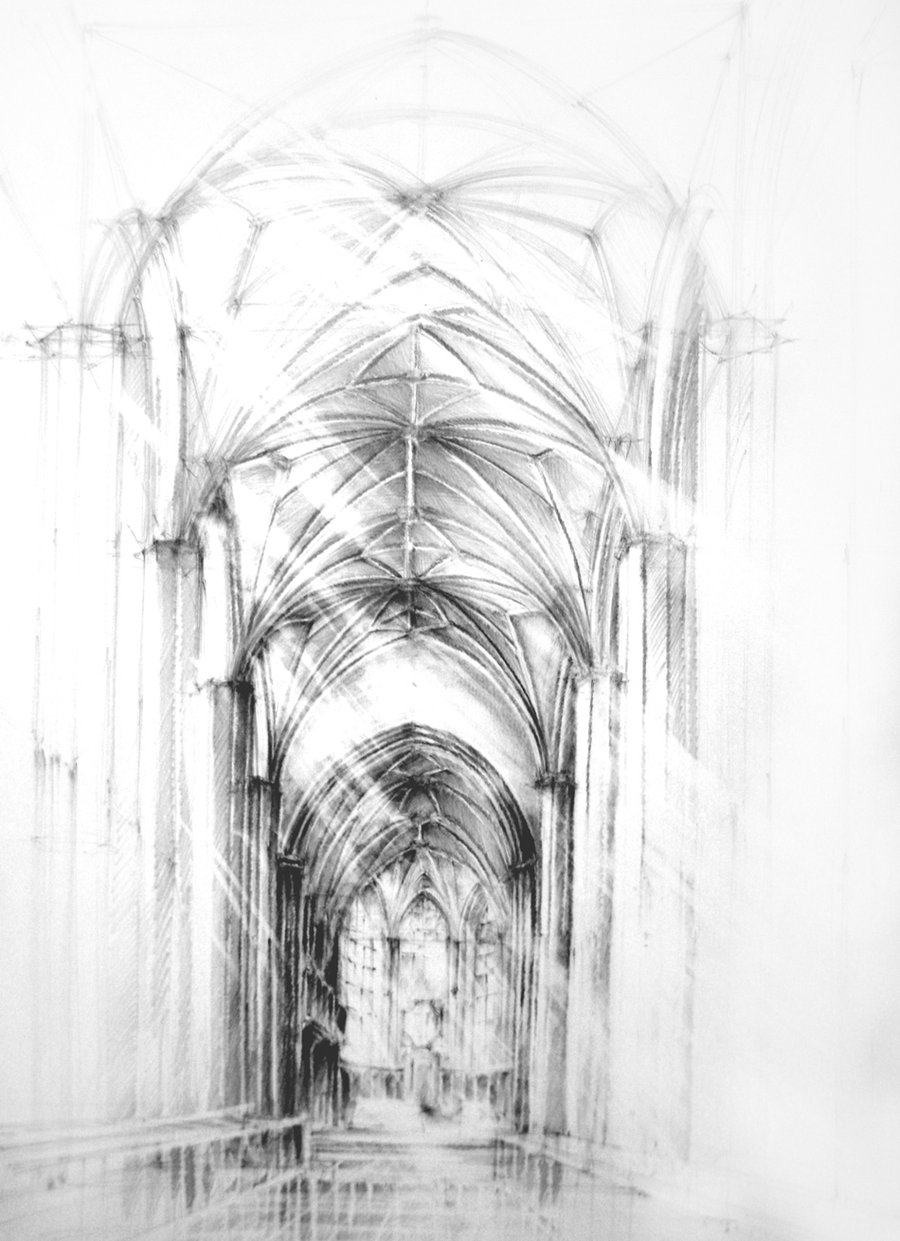Church of the Sacred River
Founding and Early History
The Sacred river is the oldest church dedicated to Saint Eloisa and was actually founded by Eona Bekk, Eloisa's adoptive mother. The morning after Eloisa's ascension to sainthood, her mother collected some of the ashes from her funeral pyre and stored them in a small clay jar. For this, she made a small shrine in her house. At first local people would come to the house to worship, and pray to Eloisa, but as word of her ascension spread more and more people wanted to visit the shrine. Eona and some of the local faithful decided to build a chapel to store the holy relic on the site of her ascension beside the Yew River. The small wooden structure was the first 'Feretory of the Vernal Bloom' and still stands in the exact spot it always has. After some years, with the number of worshippers growing and churches being built in many towns across the north and east of the Innersea Region, it was decided to build a new grand cathedral structure to celebrate the growing sect. The new edifice was built over the top of, and completely enclosing, the original small church. The new larger building retains the original name of 'Feretory of the Vernal Bloom' and stands overlooking the river on the outskirts of Yewfalls. While Eona Bekk is recognised as the first priest of Saint Eloisa, indeed, she remained such for the rest of her days, she did not retain the leadership of the church for long. She soon found that while she enjoyed speaking to worshippers about the new saint, the day-to-day running of the growing sect did not interest her at all. When the church needed to expand and build churches in other towns, Eona stepped down from leadership and passed the mantle to Farman Thrand, a young man who had grown up in the town alongside Eloisa. He became the sects first Bishop, and later, when there were multiple Bishops, he was elected as the first Archbishop. Eona stayed close to the leadership of the new church, mostly in an advisory role. From her recollections and teachings, the first holy book of the church was later compiled. The holy book of the church is called 'The Hemerology of future phases' and has several 'books' within it. The first book is 'the book of Eona' and covers many stories of the life of the saint. The second book, 'The book of Thrand' is similar in many ways but they are tales of those that lived at the same time as the saint. The whole of the Hemerology now contains seven books in total.A view of the Feretory of the Vernal Bloom beside the Yew river.
Practice
The Church of the Sacred River is probably best described as a 'lightweight' church. It is not overly rigid in its rules but takes a much more practical approach. The church will give advice when it is asked for, but if that advice is ignored and you get into problems as a result, that is on you. Churches hold 'Lessons' on the evening after market-day, based on the Casteidan calendar. These lessons will usually include stories from the life of Saint Eloisa, but will also include practical lessons about the world as it relates to farming and nature. Planting times, weather prediction etc. Priests, while conducting the lessons, will also be available at other times for further discussions. Almost every church will be on a plot of ground that will be used as a small farm. The priests maintain this area, some, especially in the larger cathedral school grounds, perform experiments and conduct research on improved farming methods. The main base for this work is within the grounds of the 'Feretory of the Vernal Bloom' in Yewfalls, a site that is almost as large as the rest of the town put together.Festivals
The primary celebration of the year is 'Springfest' that is held on the day between the months of 'Vakning' and 'Shanedrin'. This, as the name suggests, is a celebration of everything to do with Spring. But it is also the day that the child Eloisa Bekk was found by the riverbank. During the festival, it is common to decorate places of worship with spring flowers. Two that are particularly popular among the followers of the saint are Cherry Blossoms and Iris flowers. Indeed these two flowers have become motifs throughout the church and you can find their images decorating everything from sacred documents to church walls. Tubridge chapel has Iris decorations in both its stained glass window, and painted on the interior walls. The celebration itself usually consists of families and communities gathering together to signal the end of winter, give thanks to the saint for her protection through the harsh months, and to celebrate the rebirth of new life in the spring. It traditionally culminates in a feast, often for the whole town, accompanied by drinking and dancing that lasts into the night. The other main festival of the year is at the autumn equinox. This is often a much more sombre affair where worshippers gather to think of those that have been lost, as they prepare for the winter and give thanks for the harvest that has just happened. Usually, it consists of people, and priests, telling stories of winters past, and people who have passed, and how they got through those previous winters.Priesthood
As one of the most popular saints in the region, at least with rural folks, there are priests of Saint Eloisa in almost every small town. Most towns just having a small chapel and a single priest although some are larger. notable exceptions are the church in Northport in what is now the Drusovar Principality and obviously the seat of the archbishop in Yewfalls. Interestingly the church in Northport was the third one ever built and has now been rebuilt into a cathedral, whereas the second, built in Tubridge is still the exact same building with a single priest. Northports growth can largely be put down to the work of Sepal Jadehorn and her missionary work with the Geshwarin. Priests wear a robe of a light sand colour that comes to halfway between the knees and the ankle, Under this, loose trousers that come to the ankles of the same or sometimes slightly darker shade. Over the top, a stole that hangs down of a rich blue/purple colour. (the colour of Iris flowers.) The stole may have decorations sewn in gold thread and yellow or gold trim. Bishops and above have the blue/purple colours on the cuffs of their sleeves. Usually, on their feet, they will wear sandals, but there is no strict rule on footwear and practicality generally wins out. It is not unusual to see priests barefoot, especially if they are Leathin or in heavy boots if the weather or work conditions dictate it. Similarly, there are no restrictions upon who can become a priest with regard to species or gender. Those wishing to become a priest would be sent to the seminary in Yewfalls to first, be tested, and then if found to be a suitable candidate they would go on to spend up to five years in training as an Initiate before becoming a Novice. At this point, they are usually sent to assist a priest 'in the field' for a further five years before becoming an Adept.Current Status
The head of the church is Archbishop Theobald Solvarr the seventeenth person to hold the position. He leads from the headquarters of the church in Yewfalls. The Extensive complex of buildings that make up the church's holdings in the town includes the cathedral itself, the seminary, where prospective priests are trained, and two large hostels, one for housing weary travellers, and the other for helping people with no homes to find their feet. Alongside these are innumerable smaller buildings for the administration of, not just the site in Yewfalls, but also the wider church across the region. On top of all that, there are various residences for the initiates, adepts and priests all the way up to the Archbishop himself. Second only to the complex in Yewfalls, is the cathedral in Northport. This started as a simple chapel but has grown quickly over the years. Many Taned-Mada now consider Eloisa their patron saint, moving away from Golrun and the Seekers. This has greatly boosted the church in this area and its spread north and west. With churches in most towns and a large congregation of worshipers, worshipers who control the main means of food production, the church has also gained considerable political power. So far it has not needed to flex its political muscles but it is capable of making the halls of power nervous. A possible cause for contention is that the church considers the Yew River to be sacred. Until now it has always asked that those living along the river treat it with respect, but in recent times it has become more insistent in those requests, without yet making outright demands...Patron God
Patron Saint
Other Eminent People
Within Church History
-
Eona Bekk
Adoptive Mother of Saint Eloisa. An urn of her ashes is now viewable in a small shrine within the Cathedral in Yewfalls. -
Farman Thrand
First Bishop of the church and Author of the Book of Thrand. -
Sigmund Vandr
Early Missionary of the church and writer of the Book of Sigmund. -
Sepal Jadehorn
First Geshwarin Bishop and great evangelist.
Deities
Notable Members
The first manuscript of
The Book of Eona.
The Book of Eona.
The Hemerology of future phases
The Book of Eona
The book of Eona is based on the teachings of Eona Bekk, mother of Saint Eloisa. It is mostly stories of Eloisa's life, her attitude, and lessons.The Book of Thrand
The book of Thrand was written by Farman Thrand himself and contains more stories of Eloisa from the point of view of one of her contemporaries.The Book of Sigmund
This book, written by Sigmund Vandr over one hundred years after Eloisa's Ascension contains many tales of the miracles that she has performed since.The Book of Phases
The first of the 'practical' books, this one deals with the moons and the sun and predicting future events like full moons and eclipses. It was at this point that the four books were first combined into a single volume and given its current name.The Book of Signs
This book pertains to the weather and its prediction, over both, the short and long term. This book continues to grow as more geographically specific information is added.The Book of the Field
The book that relates directly to farming and the growing of plants. Here you will find information about what to plant, where, and when. Again this is another book that continues to grow.The book of the Hearth
This is the newest book within the volume, being less than two hundred years old. It contains a multitude of recipes for the preservation and storage of different foods.
Remove these ads. Join the Worldbuilders Guild












Comments
Author's Notes
Oops, I did it again, this article become over 2000 words, and it barely skims the surface of the subject. If it becomes useful I may add some sub-articles detailing specific points. Things I would like to add:-
- list of church hierarchy.
- maps of the Feretory and surrounding building complex
- more detailed content of the Hemerology
- more stories from the early days of the church
- some details of the politics of the church and how it interacts with other churches and political powers.
Ian